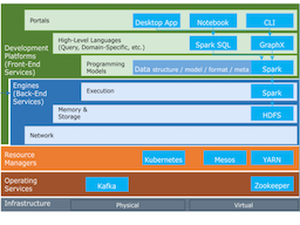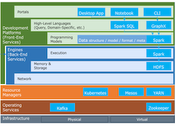Information
- Publication Type: Journal Paper (without talk)
- Workgroup(s)/Project(s): not specified
- Date: December 2020
- Journal: Communications of the ACM
- Volume: x
- Pages: 1 – 14
Abstract
Graphs are by nature ‘unifying abstractions’ that can leverage interconnectedness to represent, explore, predict, and explain real- and digital-world phenomena. Although real users and consumers of graph instances and graph workloads understand these abstractions, future problems will require new abstractions and systems. What needs to happen in the next decade for big graph processing to continue to succeed? We are witnessing an unprecedented growth of interconnected data, which underscores the vital role of graph processing in our society. To name only a few remarkable examples of late, the importance of this field for practitioners is evidenced by the large number (over 50,000) of people registered2 to download the Neo4j book “Graph Algorithms” in just over 1.5 years, and by the enormous interest in the use of graph processing in the Artificial Intelligence and Machine Learning fields3. Furthermore, the timely Graphs4Covid-19 initiative4 provides evidence for the importance of big graph analytics in alleviating the global COVID-19 pandemic. This article addresses the questions: How do the next-decade big graph processing systems look like from the perspectives of the data management and the large scale systems communities5? What can we say today about the guiding design principles of these systems in the next 10 years?Additional Files and Images
Weblinks
No further information available.BibTeX
@article{sakr_sherif-2020-cacm,
title = "The Future is Big Graphs! A Community View on Graph
Processing Systems",
author = "Sherif Sakr and Angela Bonifati and Hannes Voigt and
Alexandru Iosup and Hsiang-Yun Wu and others",
year = "2020",
abstract = "Graphs are by nature ‘unifying abstractions’ that can
leverage interconnectedness to represent, explore, predict,
and explain real- and digital-world phenomena. Although real
users and consumers of graph instances and graph workloads
understand these abstractions, future problems will require
new abstractions and systems. What needs to happen in the
next decade for big graph processing to continue to succeed?
We are witnessing an unprecedented growth of interconnected
data, which underscores the vital role of graph processing
in our society. To name only a few remarkable examples of
late, the importance of this field for practitioners is
evidenced by the large number (over 50,000) of people
registered2 to download the Neo4j book “Graph
Algorithms” in just over 1.5 years, and by the enormous
interest in the use of graph processing in the Artificial
Intelligence and Machine Learning fields3. Furthermore, the
timely Graphs4Covid-19 initiative4 provides evidence for the
importance of big graph analytics in alleviating the global
COVID-19 pandemic. This article addresses the questions: How
do the next-decade big graph processing systems look like
from the perspectives of the data management and the large
scale systems communities5? What can we say today about the
guiding design principles of these systems in the next 10
years?",
month = dec,
journal = "Communications of the ACM ",
volume = "x",
pages = "1--14",
URL = "https://www.cg.tuwien.ac.at/research/publications/2020/sakr_sherif-2020-cacm/",
}


 image
image paper
paper
